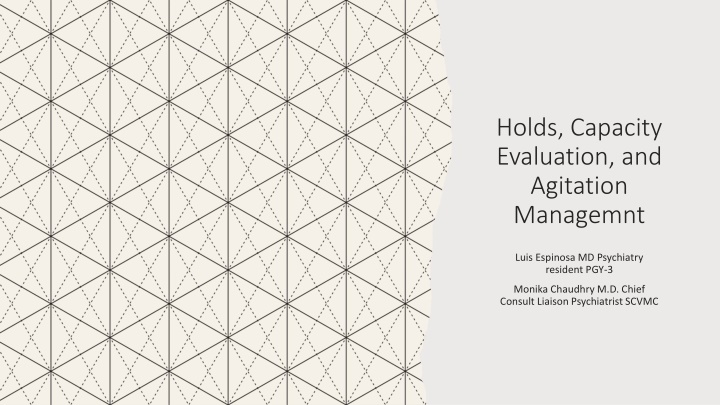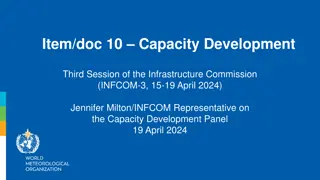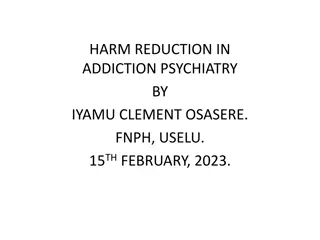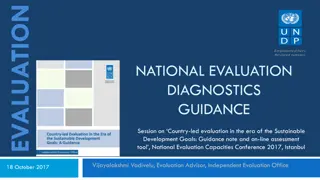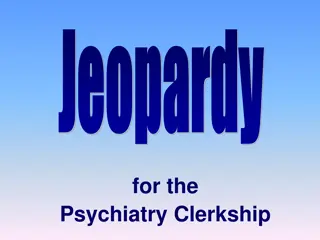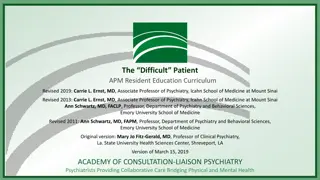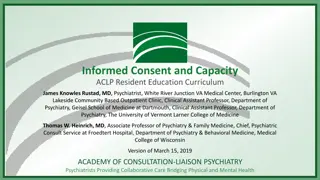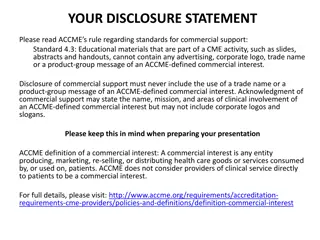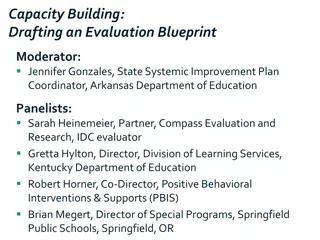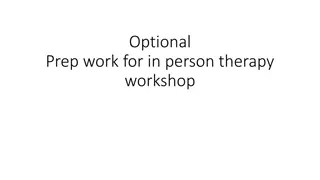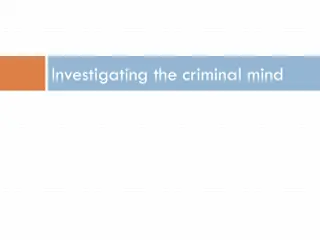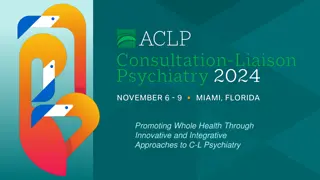Capacity Evaluation in Psychiatry
Protecting patient autonomy through capacity evaluation is vital in psychiatry. Learn about decision-making capacity, sliding scale of competence, key components, and the role of psychiatrists in assessing capacity.
Download Presentation

Please find below an Image/Link to download the presentation.
The content on the website is provided AS IS for your information and personal use only. It may not be sold, licensed, or shared on other websites without obtaining consent from the author.If you encounter any issues during the download, it is possible that the publisher has removed the file from their server.
You are allowed to download the files provided on this website for personal or commercial use, subject to the condition that they are used lawfully. All files are the property of their respective owners.
The content on the website is provided AS IS for your information and personal use only. It may not be sold, licensed, or shared on other websites without obtaining consent from the author.
E N D
Presentation Transcript
Holds, Capacity Evaluation, and Agitation Managemnt Luis Espinosa MD Psychiatry resident PGY-3 Monika Chaudhry M.D. Chief Consult Liaison Psychiatrist SCVMC
Definition of Capacity A patient s right to self-determination is protected by the legal doctrine of informed consent each man is considered to be master of his own body, and he may, if he be of sound mind . This simply means that a person should have decision-making capacity in order to give informed consent.
Definition of Capacity Capacity is decision specific One may possess capacity to make some decisions and simultaneously lack capacity to make others When you consult for Capacity, specify the medical decision in question
Sliding scale of The sliding scale of competence describes differences in the threshold or level of capacity needed, depending on the risks and benefits with which a decision may come. Lower threshold on what have for lunch vs whether or not to proceed with amputation, refusing Ativan vs refusing a PEG tube All patients, even those with established psychiatric diagnoses, have decision making capacity until proven otherwise.
When assessment is necessary For treatment When a patient refuses treatment When a patient decides on an alternative treatment determining decision making capacity involves evaluating the process the person uses to make the decision, not whether the final decision is in accord with the team s recommendation.
Four Key Components Communicating a choice Understanding the options as well as risks and benefits Appreciating how it applies to them, whether they believe it to be the case Reasoning behind the choice balancing pluses and minuses, being consistent
Role of Psychiatry Mental illnesses may affect decision-making capacity, and in those patients, psychiatrists are best suited to assess capacity. They can be consulted in all other cases as well, at the discretion of the attending The patient has a right to refuse a capacity assessment by a consultant, and his or her refusal must be respected. Patients should not be compelled or coerced into agreeing to an assessment In those cases, the responsibility will fall upon the primary physician
Prevalence An analysis of eight studies showed that physicians could identify only 42% of patients with incapacity as determined by a formal evaluation.2 It is not clear whether underdiagnosis is the result of physicians' inability to recognize incapacity or their reluctance to make the diagnosis.
Recommendations for Practice Assess language or communication barriers interfering with the patient's understanding Treat reversible causes of incapacity If needed, the use a formal tool to assess capacity and cognition. Use of a standard cognitive assessment instrument is helpful in assessing for capacity when patients score at the extremes of the scale (very high score favors capacity and very low score favors incapacity).
Aids Aid to Capacity Evaluation Hopkins Competency Assessment MacArthur Competence Assessment Tool
If The Patient Lacks Capacity Consent for treatment must be obtained from other sources. If the patient has an advance directive it should be used to guide decisions. If not, designee with medical power of attorney should be contacted. If there is no valid medical power of attorney, the closest relative usually becomes the surrogate. The priority of relatives varies by state, but the typical order is spouse, adult children, parents, siblings, and other relatives. Up to 16% of patients in intensive care units do not have a known relative or medical power of attorney, so a court-appointed health fiduciary is an option.18 If the patient is not able to give consent and delaying care to identify a surrogate will increase the risk of death or serious harm, the physician can provide emergency care without formal consent under the assumption that a reasonable person would have consented to the treatment.4
Legal Holds Lanterman Petris Short (LPS) Act concerns the involuntary civil commitment to a mental health institution in the State of California. The Act went into full effect on July 1, 1972 Danger to Self Danger to Others Grave Disability
7 articles of intent To end the inappropriate, indefinite, and involuntary commitment of mentally disordered persons, people with developmental disabilities, and persons impaired by chronic alcoholism, and to eliminate legal disabilities; To provide prompt evaluation and treatment of persons with serious mental disorders or impaired by chronic alcoholism; To guarantee and protect public safety; To safeguard individual rights through judicial review; To provide individualized treatment, supervision, and placement services by a conservatorship program for gravely disabled persons; To encourage the full use of all existing agencies, professional personnel and public funds to accomplish these objectives and to prevent duplication of services and unnecessary expenditures; To protect mentally disordered persons and developmentally disabled persons from criminal acts
Probable Cause Probable cause from case law (People vs Triplett) a state of facts must be known that would lead a person of ordinary care and prudence to believe or to entertain a strong suspicion, that the person detained is mentally disordered and is a danger to himself or to others or gravely disabled. The peace officer must be able to point to specific and articulable facts which, taken together with rational inferences from these facts, reasonably warrant his/her belief or suspicion
Exclusions from Mental Health Disorder Intellectual Disability (formerly Mental Retardation), epilepsy, or other developmental disabilities, alcoholism, other drug abuse, or repeated antisocial behavior do not, by themselves, constitute a mental health disorder (WIC 5585.25)
DTS Danger to self: can be manifested by threats or actions indicating the intent to commit suicide or inflict serious bodily harm on oneself, or actions which place the person in serious physical jeopardy, if these actions are due to a mental health disorder
DTO Dangerous to others: can be manifested by words or actions indicating a serious intent to cause bodily harm to another person due to a mental health disorder. If the dangerousness to others findings is based on the person s threats rather than actions, the evaluator must believe it is likely that the person will carry out the threats. Duty to Warn and Protect (Tarasoff)
Duty To Warn (Tarasoff) The duty of a psychotherapist/MD to warn, or take other appropriate action to protect, the foreseeable victim of a patient s violent tendencies is triggered if: A psychotherapist/MD-patient relationship exists; The psychotherapist/MD knows or should know that the patient is dangerous, and There is a foreseeable victim of the patient s violent tendencies.
Fulfillment of Tarasoff: Warning to the intended victim or others likely to apprise the victim of the danger Notifying the police.
GD Gravely disabled- a condition in which a person, as a result of a mental health disorder (rather than a chosen lifestyle or lack of funds) is unable to provide for his or her basic personal needs for food, clothing or shelter (WIC 5008). The threat to harm oneself maybe through neglect or inability to care for oneself (Doremus v. Ferrell) If a person can survive safely in freedom with the help of willing and responsible family members, friends or third parties, then he or she is not considered gravely disabled Excludes Dementia!
Indications of GD: Food Cannot distinguish between food and non-food Eats food not fit for human consumption Endangers health by gross negligence in diet and nutrition Is dehydrated or malnourished States intentions not to eat Demonstrates excessive and constant food preferences or aversions except for genuine religious reasons which endangers health
Indications of GD: Clothing Engages in public nudity or inadvertent exhibitions Wears filthy or grossly torn clothing unsuitable to the climate possibly jeopardizing health Repeatedly destroys clothing Has no realistic plans for obtaining clothing Note: A person s predilection for unconventional dress, whether due to cultural or personal preferences, does not by itself indicate an inability to provide clothing
Indications of GD: Shelter Is unable to locate housing and make appropriate arrangements or accept assistance by others to do so Is unable to manage own household in such a way to avoid clear dangers to health Has no realistic plans for obtaining suitable shelter Note a transient lifestyle and/or lack of shelter may be due to personal preference or poverty Remember that the inability to provide shelter must be the result of a mental health disorder in order to justify involuntary detention
Hold Duration 5150 Hold 72 Hours May be converted to 5250 Hold 14 days They need to be physically prevented from eloping If patient is refusing psych meds Riese Petition can be filed in order to medicate involuntarily
Who Can Write Holds? At VMC: Members of the psychiatry team (MD, RN) In the ED: Emergency Medicine Physician In the community: Peace officers, Police, LCSW part of mobile crisis team
References Revisiting Decision Making Capacity, Aparna Atluru Evaluating Medical Decision-Making Capacity in Practice, CRAIG BARSTOW, MD; BRIAN SHAHAN, MD; and MELISSA ROBERTS, MD Garriga et al. Assessment and management of agitation in psychiatry: expert consensus. World J Biol Psychiatry 2016;17:86-128 Allen MH. Managing the agitated psychotic patient: a reappraisal of the evidence. J Clin Psychiatry 2000;61(S14):S1-S20 Battaglia et al. Haloperidol, lorazepam, or both for psychotic agitation? A multicenter, prospective, double-blind, emergency department study. Am J Emerg Med 1997;15:335 340 Wilson et al. A comparison of the safety of olanzapine and haloperidol in combination with benzodiazepines in emergency department patients with acute agitation. J Emerg Med 2012;43(5):790-7
